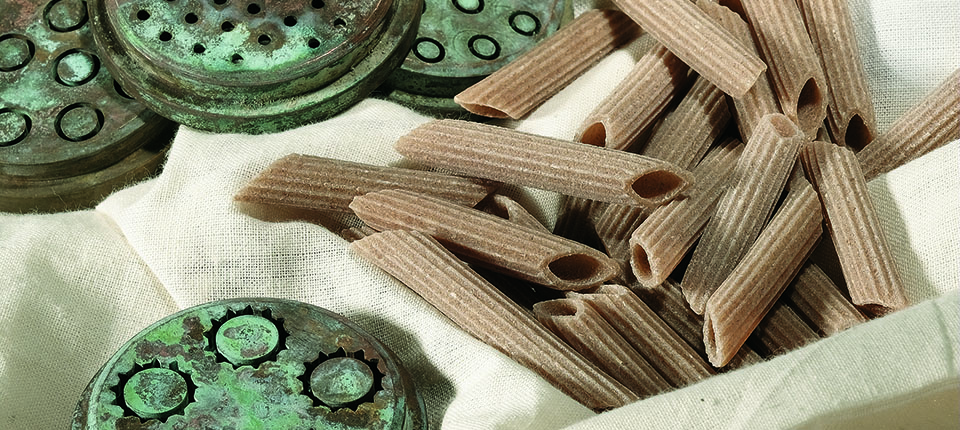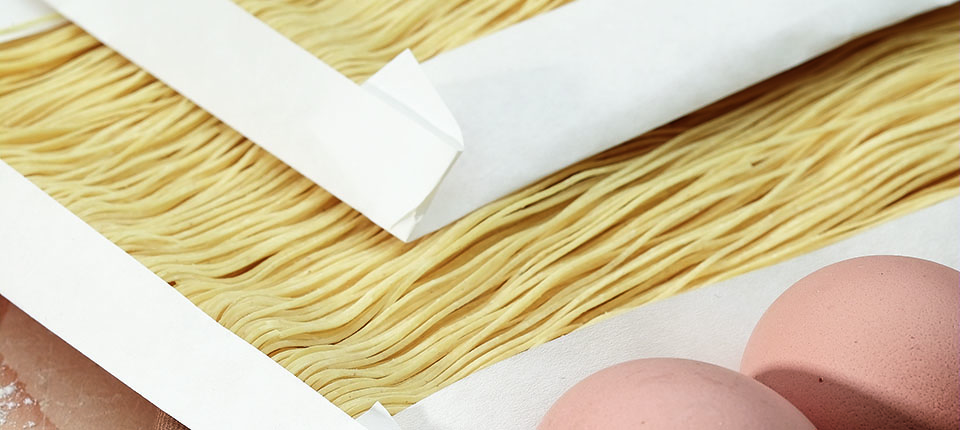
Hygienic design: obligation and opportunity for food processing equipment manufacturers and users
12 February 2014Improving the hygienic design of food processing equipment, compliance with legal requirements apart, also makes it possible to make cleaning and sanitization operations more sustainable and less expensive by reducing the use of chemical products and machine downtimes. This in turn leads to significant reductions in production costs, along with an increase in system availability and consequently production output.
by Giampaolo Betta (Università degli studi di Parma, Dipartimento di Scienze degli Alimenti)
The hygienic design and construction of equipment and factories – commonly known as “Hygienic Design” – is one of the main requirements which food, pharmaceutical and cosmetic companies have to implement in order to guarantee safe and fit-for-purpose products. Both equipment users and manufacturers need to know hygienic design criteria in detail and understand the role which said criteria have in relation to the effectiveness and efficiency of production processes. The benefits for users and manufacturers are:
• for users “hygienic design” means being able to improve the efficiency of processes, while at the same time having more effective control over the process and consequently more linear and worry-free product safety management;
• for manufacturers “hygienic design” means being able to supply equipment that will satisfy even the most demanding clients in terms of safety and at the same time will have significantly lower running costs compared to traditional equipment.
Legislative aspects and voluntary documents
According to EU legislation (EC/852/2004), the hygiene of equipment designed for producing foodstuffs is compulsory by law. In particular Machinery Directive (2006/42/EC), the first version of which dates back to 1989, known mainly with regard to aspects concerning the safety of workers, contains the basic mandatory criteria for the hygienic design of food processing equipment.
Furthermore, the same principles are envisaged in the US law under Title 21 of the Code of Federal Regulation (CFR), Part 110.
In support of the Machinery Directive, the CEN (European Committee for Standardization) and the ISO (International Organization for Standardization) drew up two specific documents (EN 1672 – 2:2009 and EN ISO 14159:2008), which took on the role of harmonized standards; their application is therefore voluntary but allows manufacturers to have presumption of conformity with the Directive.
To further support the Machinery Directive practical guidelines for design have been devised by various international bodies; in particular the European Hygienic Engineering and Design Group has published 42 papers, which also include standardized practical tests for assessing the cleanability, sterilizability and bacteria tightness of food processing equipment. In an almost equivalent manner in the United States, the 3-A organization has developed sanitary standards for equipment which have become the main reference standards for the American market.
State of the art
Despite the mandatory nature of the criteria laid down in the legislation in force, there is still a lot of confusion in the food industry and mechanical engineering sector for the food industry as to the real influence which these requirements have on the design of food processing equipment.
It is often assumed that the only obligations manufacturers need to observe concern the choice of materials or that the only additional requirement to be met is an adequate average roughness value for contact surfaces. However, building a machine out of stainless steel is not enough for it to be considered a hygienic machine.
In addition, various bibliographic sources indicate how food processing equipment which is not effectively hygienic is one of the main causes of food contamination.
In fact the capacity of many microorganisms, including pathogens, to cling to the surfaces of equipment by arranging themselves as biofilm, leads to the probable presence of breeding grounds in those parts of the machinery which are the most difficult to clean. In the most serious cases, microbiological studies have even proved that the most critical parts of some equipment have a higher microbial load after washing than during operation. Basically these surfaces are kept “clean” by the product; the effect of such action on the safety and quality of the product is obvious.
EHEDG: what it is and how it works
EHEDG (www.ehedg.org website available in 18 languages) is a European consortium of food industries, food processing equipment manufacturers, research institutes and public health authorities. Founded in 1989 its aim is to promote Food Hygiene awareness, contribute to the prevention of food safety problems and consequently uphold the image of the food industry in the eyes of the consumer.
To date EHEDG has published 42 guidelines on the hygienic design of food processing equipment. The aim of these documents it to provide manufacturers with specific design criteria for different kinds of machinery and systems which, without imposing strict and ready-made solutions, allow them to obtain conformity with legal requirements; they are therefore structured in such a way as to be easily understood and are full of diagrams and drawings illustrating real design concepts, some of which are compliant and others which are not, just by way of example.
The complete list of EHEDG guidelines can be found at: http://www.ehedg.org/?nr=9&lang=en
The guidelines are developed by international work groups (Subgroups), divided up by thematic areas, where members include company representatives and consortium member institutes, based on their specific expertise.
There is also EHEDG certification; this is issued by accredited laboratories for food processing equipment which, as well as complying with the requirements described in the guidelines, have also successfully passed specific practical, standardized tests published by EHEDG.
EHEDG is present in countries all over the world via its Regional Sections which promote EHEDG principles at a national level, mainly by organizing informative events and translating the guidelines into different languages.
Every two years EHEDG organizes a World Congress called the “EHEDG World Congress on Hygienic Engineering and Design” which is the main world summit and is attended by the world’s experts on hygienic design for equipment and factories. The next edition of this congress will be organized by the Italian Section and is to be held in Parma (Italy), 30 – 31 October 2014, in conjunction with the CibusTech – FoodPack trade exhibition.
Further information is available on the Congress website: http://www.ehedg-congress.org
EHEDG also promotes a training project through its “Training and Education Subgroup” and the authorized trainers which belong to it.
The next “EHEDG Advanced Course on Hygienic Design” (in Italian) will be held in Parma (Italy), 11 – 13 March 2014.
Hygienic design: a few examples
Two of the main criteria involved in hygienic design are cleanability and drainability.
As an example, let us take the case of a removable joint and assess the cleanability of the two possible solutions (figure 3).
To ensure that the joint is cleanable, first of all it is necessary to avoid metal to metal contact: where two metal surface meet it is always necessary to insert an elastomeric seal. It is also necessary for the elastomeric seal to face the product to avoid the formation of a gap between the metal surfaces which would be impossible to clean. The joint must be designed in such a way as to guarantee perfect alignment which can be guaranteed by a radial retainer. In fact, poor alignment could lead to the creation of a dip which in turn could create a difficult to clean area.
Furthermore it must guarantee controlled compression of the elastomeric seal and this can be done using an axial retainer: a seal which is insufficiently compressed may not be able to guarantee bacteria tightness and in more serious cases may fail to create an adequate seal; excessive compression on the other hand would generate mechanical strain on the elastomeric material which would therefore deteriorate rapidly.
Now let us look at a hygienic valve and assess its drainability.
The valve in Figure 4 is a hygienic valve in that it is compliant with all the design criteria governing cleanability. However, for it also to be drainable it is essential that there are no dead ends or pockets and this can only be achieved by installing it in the correct position.
Furthermore, for the purpose of drainability one must remember that all the surfaces and piping need to be on a suitable gradient to ensure that the liquids contained therein can be drained off completely.
It is possible to refer to EHEDG documents for more detailed indications.
An obligation but above all an opportunity
IAchieving complete and easy cleanability of food processing equipment, as well as being a legal obligation also represents an economic opportunity for the food industry: improving the hygienic design of food processing equipment, compliance with legal requirements apart, also makes it possible to make cleaning and sanitization operations more sustainable and less expensive by reducing the use of chemical products and machine downtimes.
This in turn leads to significant reductions in production costs, along with an increase in system availability and consequently production output.
The idea of having to fulfill legal obligations for many manufacturers is still considered a competitive disadvantage because inevitably it means that hygienic food processing equipment is more expensive. However, when seen from this new point of view, the commitment of manufacturers to build increasingly more hygienic equipment does in fact translates into a competitive advantage, allowing them to offer the food industry products which provide significant and easily tangible advantages in terms of running costs.
Conclusion: Hygienic Design, why?
Because it guarantees definite and worry-free control of product safety.
Because it reduces washing, sanitization and maintenance times, increasing system availability for production.
Because it can lead to cost reductions for washing, sanitization and waste disposal operations.
Because it makes it possible to fully observe European and US legal requirements.
Because it is consistent with the overall aims of innovation, efficiency and sustainability.
Keep reading, download the magazine
 PASTARIA DE (digital edition) 2014 n. 1 (ITALIANO) (21.0 MiB, 2,080 download)
PASTARIA DE (digital edition) 2014 n. 1 (ITALIANO) (21.0 MiB, 2,080 download)
Registrazione necessaria. Sign-up to download.
 PASTARIA INTERNATIONAL DE (digital edition) 2014 n. 1 (ENGLISH) (23.9 MiB, 1,129 download)
PASTARIA INTERNATIONAL DE (digital edition) 2014 n. 1 (ENGLISH) (23.9 MiB, 1,129 download)
Registrazione necessaria. Sign-up to download.


